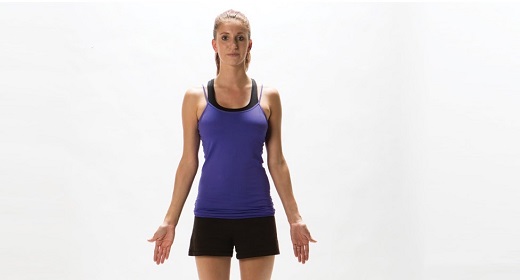Some yoga poses seem simple and passive at first sight. Yet getting them right is not all that straightforward. Example — Mountain Pose…

Does your Mountain Pose make you feel strong, balanced, and grounded? Read our post to make sure you take all the alignment principles into consideration.
Cautions:
Don’t practice Mountain Pose if you are currently suffering from a headache, low blood pressure, diarrhea, or insomnia.
How to do Mountain Pose: step-by-step instructions
- Stand up straight, your legs together, the outer edges of the feet parallel to each other. Spread the weight of your body evenly between the heels, the toes, and the balls of both feet, keep your toes spread wide.
- Engage your legs and lift your kneecaps.
- Straighten your shoulders, open your chest, straighten your neck. Bring your pelvis toward the navel.
- Arms. Here there are several options: 1) Relax them beside the torso 2) Fold your hands in Namaste 3) Raise the arms up past your sides, palms facing each other. Stretch your torso upwards.
- Relax while maintaining your stability. Don’t forget to breathe.
Beginner tip: It may be hard for some people to stay balanced with their feet together. In this case, you may place them a few inches apart. But make sure the outer edges of your feet stay parallel.
Mistakes to avoid: Don’t lift your chin up and don’t bring your lower back forward.
Benefits of Mountain Pose:
- Improves posture
- Strengthens abdominal muscles
- Relieves sciatica symptoms
- Prepares you for other standing poses
- Gives you an energy boost (great pose for a morning practice!)
- Improves blood circulations in legs
- Helps to keep your spine and joints young and supple
Mountain pose is a good transition between standing poses. It allows you to rest and to soak up the benefits of the previous pose. It’s a beginner pose that helps you build up your strength and improve your balance from your first yoga classes. And imagining yourself as a big mountain grounded to the earth with a peak high in the clouds may really help with the alignment in Tadasana!









































